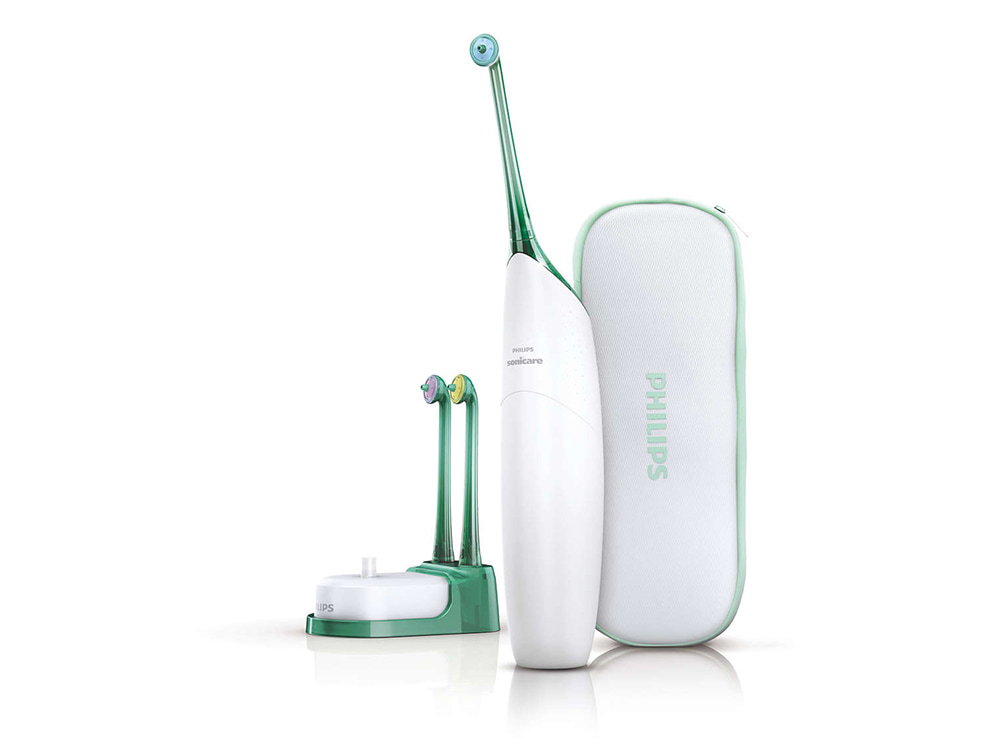Location:HOME > INFO CENTER >
Water Flosser (Oral Irrigator), everything you need or want to know.
Date:2022-12-10 15:49

You should use the oral irrigator every day after brushing your teeth, especially in the evening. In the evening we have the most plaque and leftover food between our teeth, which should not be deposited overnight. For radiantly clean teeth, you should definitely use the oral irrigator every evening.
What first, oral irrigator or brushing your teeth?
Using an oral irrigator before brushing and flossing can loosen food particles for easier flossing later. Used after brushing and flossing, an oral irrigator can get rid of food debris in hard-to-reach places.When do you use an oral irrigator?
The oral irrigator should be used daily in the morning and evening before or better after brushing your teeth. But you can also use the oral irrigator in between, for example to remove annoying leftovers.What is an oral irrigator good for?
An oral irrigator is a handheld oral care device that directs a stream of water between your teeth and gums, removing food particles, plaque and bacteria. In combination with daily flossing, an oral irrigator improves your daily oral care.
How do you use an oral irrigator correctly?
You simply use your oral irrigator every morning and evening before or after your usual brushing. Hold the water jet in the interdental spaces and along the gum line. The jet now washes away all food residue and the work around the care of the interdental spaces is already done!
What goes in the oral irrigator?

It is advisable to brush your teeth with a conventional toothbrush before the oral irrigator treatment. The oral irrigator then removes plaque and leftover food from places that the toothbrush could not reach. Before using the treatment, the tank is filled with lukewarm water.
How do I clean my oral irrigator?
Clean your oral irrigator every 1 to 3 months to ensure optimal performance.
clean your oral irrigator
1, Mix 2-4 tablespoons (1-2 ounces) of white vinegar with 16 ounces (473 mL) of warm water.
2, Fill the tank with the solution and then allow half of it to flow through the oral irrigator.
How useful is an oral irrigator?
Oral irrigators are not really a useful addition to daily dental care. Leftover food and bacteria are deposited in the spaces between the teeth, causing odor and inflammation. To keep teeth and gums healthy, food debris and plaque must be removed.
How often should you use an oral irrigator?
You should use the oral irrigator every day after brushing your teeth, especially in the evening. In the evening we have the most plaque and leftover food between our teeth, which should not be deposited overnight.Is an oral irrigator harmful?

It is particularly dangerous for the gums if you use the oral irrigator with too high a pressure setting. In addition, the device must be cleaned regularly and carefully to prevent bacteria and germs from settling there.
Which is the best oral irrigator?
Choose your personal oral irrigator test winner from the following list: 1st place - very good (comparative winner): Waterpik WP660 Ultra Professional - from 78.61 euros. 2nd place - very good: Panasonic EW1611 - from 81.49 euros. 3rd place - very good: Oral-B Pro 700 & Waterjet - from 75.95 euros.
Which oral irrigator for tonsil stones?
Recommendation: Waterpik WP660 Ultra oral irrigator
What is also positive for the removal of tonsil stones is the well thought-out ergonomics of the oral irrigator.
Which oral irrigator for gum pockets?
The Waterpik ® Water Flosser is clinically proven to help you remove plaque and promote gum health. If you suffer from periodontitis, you may also develop periodontal pockets. Pocketing occurs when the gums separate from the teeth.In what order do you brush your teeth?
You should brush your teeth in this order: Start by brushing the chewing surfaces of your teeth on the left and right, in the upper and lower jaw. Then clean all external surfaces: From the back left to the back right and in the upper and lower jaw.
Can you remove tartar with an oral irrigator?
Although oral irrigators are very good at removing food debris and dissolving plaque with a jet of water, they are not an equivalent substitute for the scrubbing motion of dental floss to loosen tartar and plaque.
Which mouthwash for oral irrigator?
Mouthwash additives
Dentists prescribe therapeutic mouthwashes to treat gum disease. These prescription solutions typically contain the antimicrobial drug chlorhexidine gluconate (CHX) and include brands such as Peridex TM and Periogard.How good is AirFloss?
As good as the gold standard

Philips AirFloss Ultra and dental floss were found to be equally good at removing plaque biofilm when used daily. ... It should be checked whether there is a convenient and effective alternative for people who don't like dental floss.
How often should I floss?
Dental floss should be used at least once a day. The rule here is: the more often, the better. The application is best done in the evening. This removes all the toppings and leftover food from the gaps that have accumulated throughout the day.
Which oral irrigator for crowns?
The Waterpik ® Water Flosser is designed to clean the areas around dental appliances and dentures. Unlike dental floss, the unique pulsating water jet cleans under bridges and on crowns in places where bacteria and food particles can get stuck.
As a professional manufacturer of electric toothbrush and oral irrigator / water flosser, Shenzhen Relish provides various types of electric toothbrush wholesale and OEM customized services. You can also wholesale water flosser from Relish at factory price. We can provide you highly competitive prices and look forward to working with you.

Post a comment
- All comments(0)
No comments yet, come be the first!

 日本語
日本語 Español
Español Deutsch
Deutsch 中文
中文




